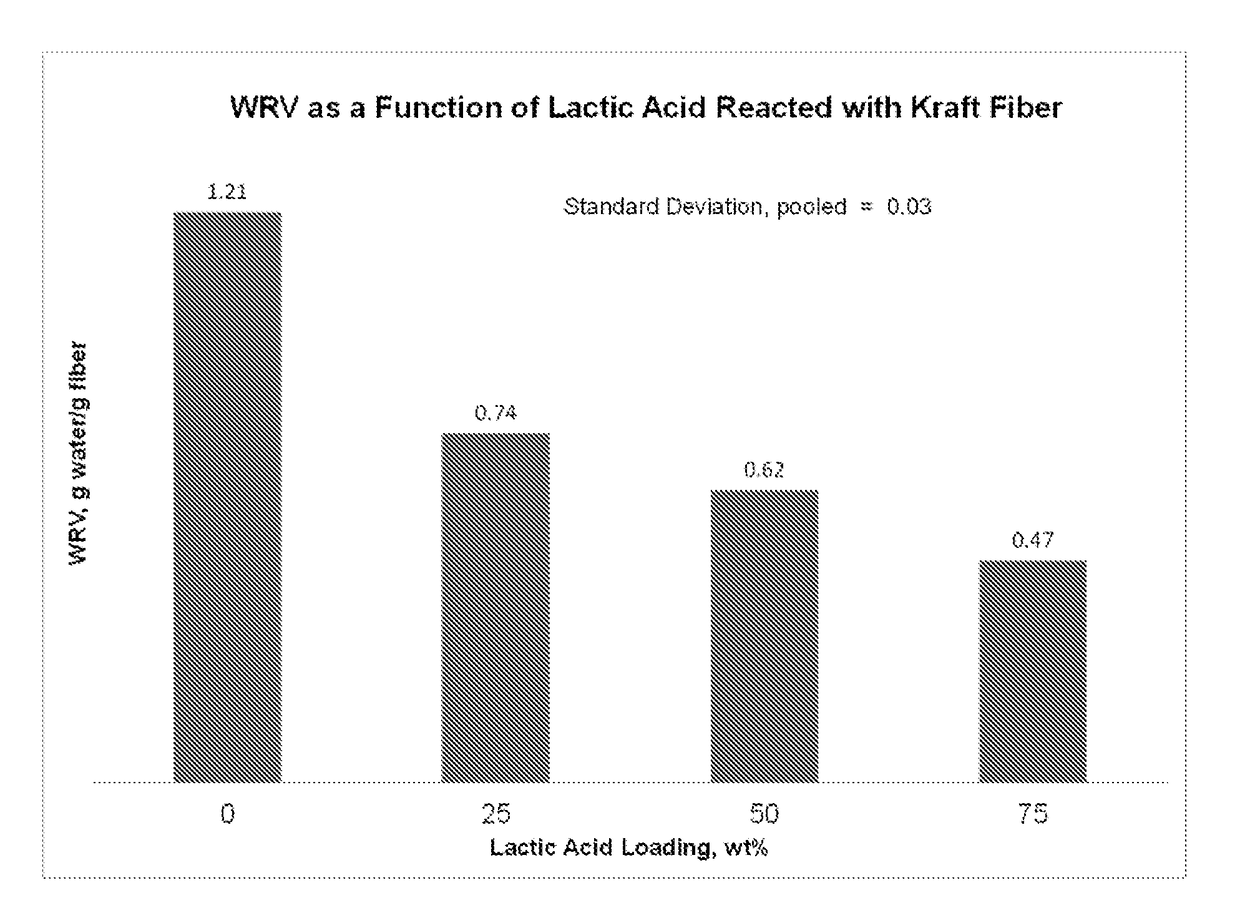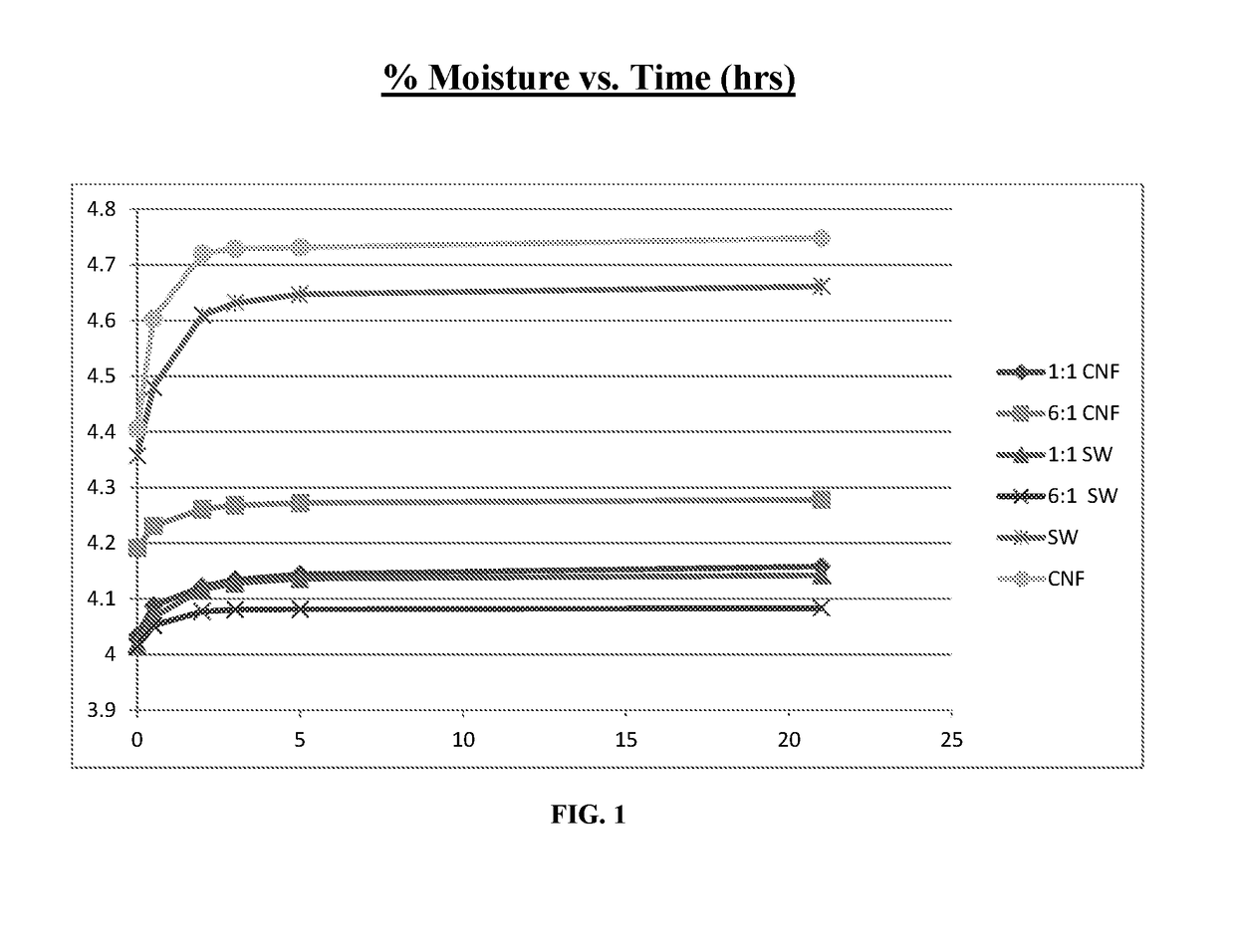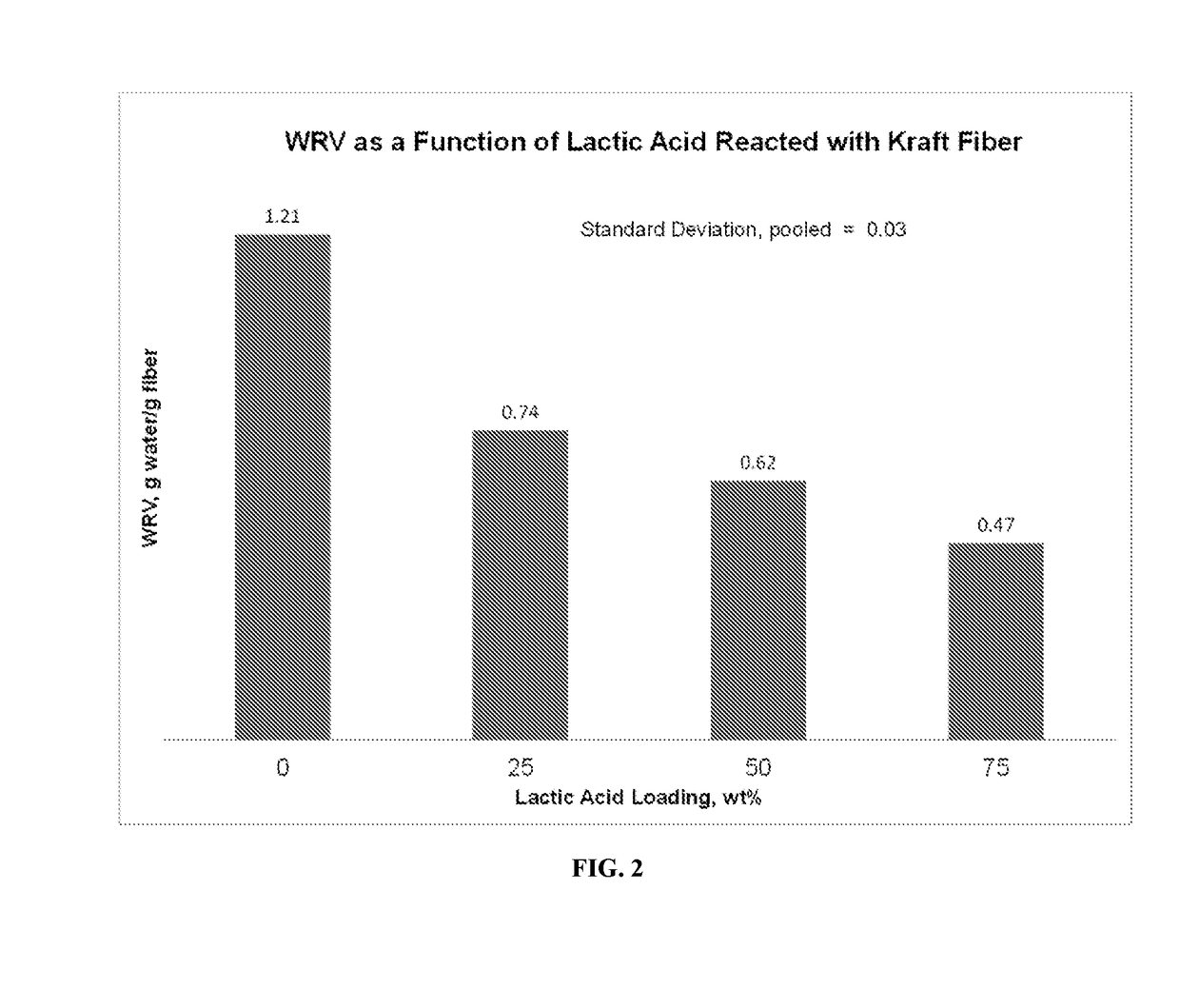Methods of controlling the hydrophilicity of cellulose
- Summary
- Abstract
- Description
- Claims
- Application Information
AI Technical Summary
Benefits of technology
Problems solved by technology
Method used
Image
Examples
example 1
Rate of Moisture Pick-Up
[0051]Moisture pickup of a modified cellulose sample in a controlled humidity and temperature room (50% RH, 70 F TAPPI standard test room) is shown in FIG. 1. In this Example, various samples of soft wood (SW) and cellulose nanofibers (CNF) were used and varying ratios of lactic acid to dry fiber. In the ratios shown in FIG. 1 and in Table 1 below, The first number is the parts of lactic acid by weight, the second number is the parts of dry fiber by weight. This % moisture content of the samples are plotted over time in hours. The data contain the rate of moisture pickup for softwood fibers as well as freeze dried CNF. The % moisture pick-up over time for increasing lactic acid treatment is also given.
[0052]Untreated CNF shows a higher equilibrium moisture content that CNF treated with lactic acid. Bleached softwood kraft pulp has a high, but slightly lower equilibrium moisture content compared to CNF. Treating the softwood fiber with lactic acid also lowers ...
example 2
Effect of Lactic Acid on Cross Fiber Bonding
[0054]In this example, bleached southern hardwood kraft pulp (Canadian Standard Freeness [CSF]˜385) was treated with lactic acid. This pulp was adjusted to 5% consistency and lactic acid was mixed in using a bench top mixer. The ratio of dry fiber to lactic acid in the resulting mixture was 1:1 by weight. This mixture was placed in an oven at 120° C. for approximately 48 hours, allowing the reaction between the lactic acid and fibers to proceed, as well as driving off the initial water and any water generated as a reaction product.
[0055]Several handsheets were made using the bleached southern hardwood kraft pulp, with various levels of esterified cellulose added to the handsheet. Table 2 contains test results for 0%, 5%, 10%, 20% and 30% addition, by weight, of the modified fibers added to the handsheets.
TABLE 2AdditionTensilerate ofBasis(TEA)Internal bondmodifiedWeightCaliperLoadStd.Std.IntegralStd.Ft.lb. / Std.fibergsm0.001″lbDev.Stretch %...
example 3
Effect of Lactic Acid Treatment on Water Retention
[0057]This example shows how lactic acid treated fibers exhibit lower water holding capacity compared to untreated fiber. Water Retention Value test method (WRV) is a measure of the water content of fiber after it has been subjected to an elevated g force for a specific amount of time. The lower the ratio of gm of Water per gram of fiber, the lower the capacity of the fiber to interact and hold water within its structure.
[0058]As shown in FIG. 2, lactic acid treated fiber has a much lower affinity for, or interaction with, water than untreated fibers. Fibers with low WRV ratios are known to release more water during a pressing operation (exit a press at higher solids) and, therefore, require much less energy to dry than fibers with higher WRV ratios.
PUM
| Property | Measurement | Unit |
|---|---|---|
| Temperature | aaaaa | aaaaa |
| Temperature | aaaaa | aaaaa |
| Fraction | aaaaa | aaaaa |
Abstract
Description
Claims
Application Information
 Login to view more
Login to view more - R&D Engineer
- R&D Manager
- IP Professional
- Industry Leading Data Capabilities
- Powerful AI technology
- Patent DNA Extraction
Browse by: Latest US Patents, China's latest patents, Technical Efficacy Thesaurus, Application Domain, Technology Topic.
© 2024 PatSnap. All rights reserved.Legal|Privacy policy|Modern Slavery Act Transparency Statement|Sitemap



